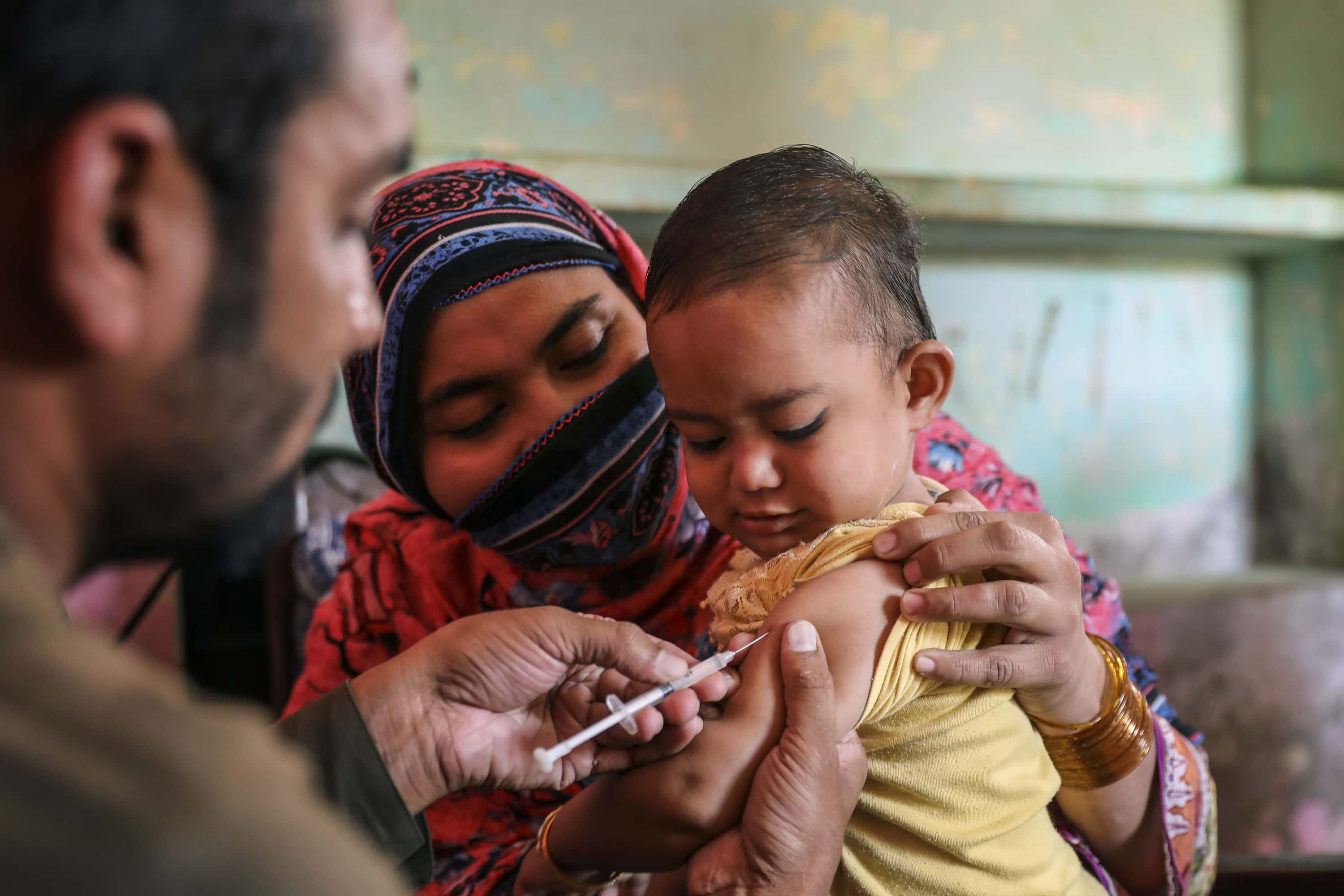
Why does universal coverage of vaccines matter?
Because childhood vaccinations save lives. Prior to the introduction of vaccines, millions of children died or suffered long-term disabilities from diseases such as diphtheria, measles, polio, tetanus, meningitis and pertussis. Most of these diseases are highly contagious, spreading quickly through populations, with often devastating consequences. Immunization programmes benefit each vaccinated child and they halt the transmission of diseases to others. When a high proportion of the population living in a community is immunized, the ability of pathogens to reproduce is disrupted and ‘herd’ or ‘social’ immunity develops. Herd immunity protects members of the community who are unable to be vaccinated, such as newborns and individuals with compromised immune systems.
Immunization prevents between 2 and 3 million deaths every year.
Threats to progress: Inequities and new challenges on the horizon
The remarkable increase in vaccination coverage levels around the world over the past three decades is a success story to be celebrated, yet recent stagnation of around 85 per cent global coverage and uneven progress across countries is an alarm bell as the poorest and most vulnerable children are still not being immunized. There are also emerging threats to sustaining immunization coverage, including reduced risk perception among parents, complacency of governments and donors, and challenges associated with the proliferation of misinformation online. Conflicts that both disrupt health-care systems and result in the displacement of children, as well as demographic changes also pose heavy challenges to immunization programmes.
The resurgence of measles in countries where the disease had been eliminated and the frequency of reports from many countries on other outbreaks of vaccine-preventable diseases is alarming. The total number of measles cases reported by May 2019 (168,000 cases) is more than three times the number reported by this date in 2018 (51,000 cases). The two continents with the highest number of reported measles cases as of May 2019 are Africa and Europe.
Why are parents hesitant to vaccinate their children?
WHO and UNICEF collect a range of information on vaccines annually from 194 countries through the Joint Reporting Form (JRF). This form has included a set of open-ended questions on vaccine hesitancy since 2014. Country responses are organized on the first reason provided on the JRF for vaccine hesitancy into seven response types: Access (e.g., parents are working or are engaged in other tasks and cannot take children for vaccination), beliefs (e.g., personal, religious, local norms), knowledge gap (e.g., lack of information about vaccines), misinformation (e.g., distrust of vaccines due to anti-vaccine lobby groups), vaccine safety (e.g., fear of adverse reactions), no hesitancy/not applicable, and no response provided.
The trend data from 2014 to 2018 show that the first reason reported by countries for vaccine hesitancy was consistently vaccine safety. The good news is that knowledge gaps and access issues both decreased over time as reasons for vaccine reluctance. But, the percentage of countries reporting beliefs and misinformation as the first source of vaccine hesitancy increased slightly. These patterns were generally the same across regions and country income classification. It is important to note that each year only around 30 per cent of countries referenced documented evidence in support of their response.
A call to action
Safe and effective vaccines are widely available, often free of cost to families through routine immunization services. However, in 2017, an estimated 19.9 million infants missed out on vaccines such as three doses of DTP vaccine. It is every child’s right to be fully vaccinated, yet the world is falling short on delivering on this promise. It is time for concerted action to help countries address misinformation about vaccines as well as to rapidly detect and respond to threats to public trust. Together we can make great strides in shoring up immunization programmes and communication strategies so that all children can benefit from vaccination services, and so that the world stays on course to achieve the 2030 global goal of universal health coverage.